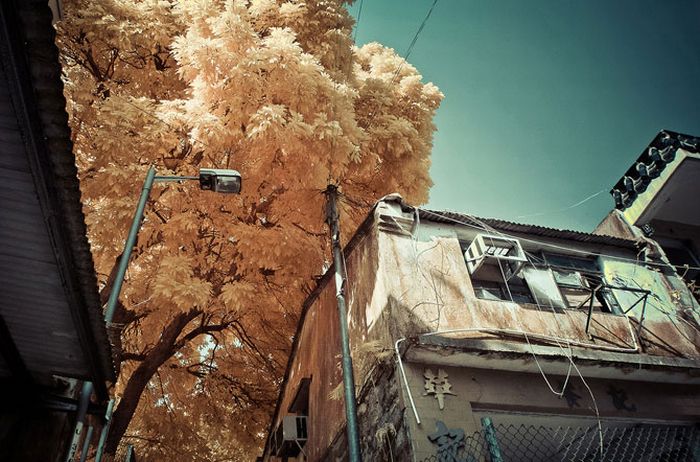|
|
Infrared Photography, Hong Kong, China
|
In the 1950s, Hong Kong's rapid industrialisation was driven by textile exports and other expanded manufacturing industries. As the population grew and labour costs remained low, living standards rose steadily. The construction of Shek Kip Mei Estate in 1953 followed a massive slum fire, and marked the beginning of the public housing estate programme designed to cope with the huge influx of immigrants. Trade in Hong Kong accelerated even further when Shenzhen, immediately north of Hong Kong, became a special economic zone of the PRC, and Hong Kong was established as the main source of foreign investment in China. The manufacturing competitiveness gradually declined in Hong Kong due to the development of the manufacturing industry in southern China beginning in the early 1980s. By contrast, the service industry in Hong Kong experienced high rates of growth in the 1980s and 1990s after absorbing workers released from the manufacturing industry.
In 1983, when the United Kingdom reclassified Hong Kong from a British crown colony to a dependent territory, the governments of the United Kingdom and China were already discussing the issue of Hong Kong's sovereignty due to the impending expiry (within two decades) of the lease of the New Territories. In 1984, the Sino-British Joint Declaration – an agreement to transfer sovereignty to the People's Republic of China in 1997 – was signed. It stipulated that Hong Kong would be governed as a special administrative region, retaining its laws and a high degree of autonomy for at least 50 years after the transfer. The Hong Kong Basic Law, which would serve as the constitutional document after the transfer, was ratified in 1990.
• Since 1997
On 1 July 1997, the transfer of sovereignty from United Kingdom to the PRC occurred, officially ending 156 years of British colonial rule. Hong Kong became China's first special administrative region, and Tung Chee Hwa took office as the first Chief Executive of Hong Kong. That same year, Hong Kong suffered an economic double blow from the Asian financial crisis and the H5N1 avian influenza. In 2003, Hong Kong was gravely affected by the outbreak of severe acute respiratory syndrome (SARS). The World Health Organization reported 1,755 infected and 299 deaths in Hong Kong. An estimated 380 million Hong Kong dollars (US$48.9 million) in contracts were lost as a result of the epidemic.
|
|









